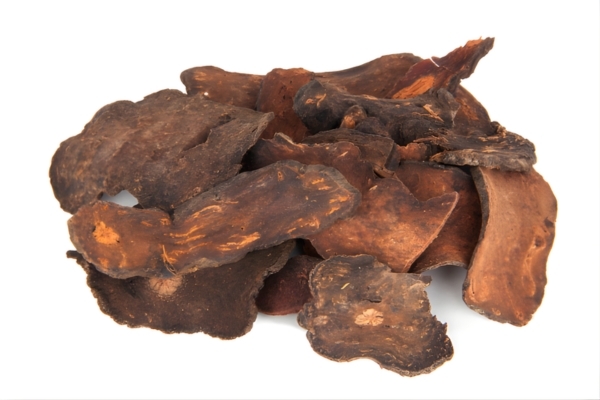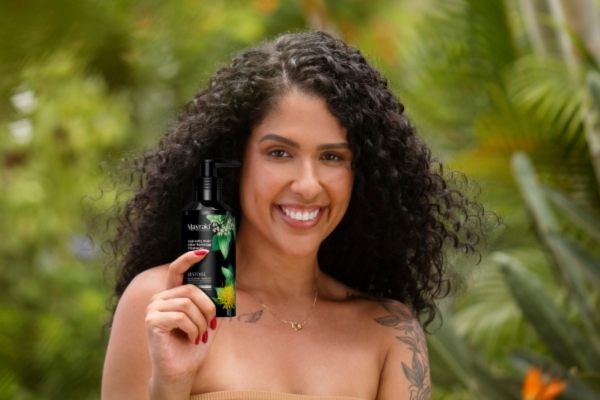The Role of Antioxidants in Preventing Premature Graying: Science and Strategies
Nov 18, 2025 | By Maria Eliza Pineda

Premature graying is one of the first visible signs of aging, and it can affect both men and women, often before middle age. Research shows that one of the key causes is oxidative stress: excess reactive oxygen species (ROS) damage melanocytes and hair follicle stem cells. Because of this, antioxidants have gained attention for their potential role in protecting hair pigment.
How Graying Occurs: The Role of Oxidative Stress
Melanocyte Biology and Pigment Production
Hair color is produced by melanocytes, which synthesize melanin inside hair follicles. When melanocytes are active, hair retains its natural color. As we age, melanocytes gradually lose their ability to produce melanin, leading to the appearance of gray hair.
ROS, Free Radicals, and Damage to Pigment Cells
Reactive oxygen species are highly reactive molecules that can damage cells, including melanocytes. Excess ROS can impair melanin production and accelerate the aging process of hair follicles. Oxidative damage is a primary trigger for premature graying.
Decline in Antioxidant Defenses in Aging Follicles
Aging hair follicles often show reduced levels of natural antioxidants like catalase and superoxide dismutase (SOD). This decline makes follicles more vulnerable to ROS. Hydrogen peroxide can accumulate in the follicle, further inhibiting melanin production.
The “Tipping Point” When Pigment Production Ceases
At a certain point, oxidative damage surpasses the follicle’s repair capacity, and melanin production stops. Once this happens, graying becomes irreversible because the melanocytes are no longer functional. Early intervention is therefore crucial.
Antioxidants: How They Help Protect Hair Pigment
Neutralizing ROS and Preventing Cellular Damage
Antioxidants neutralize reactive oxygen species before they can damage pigment-producing cells. By reducing oxidative stress, they help maintain melanocyte function and melanin synthesis. Follicles with adequate antioxidant protection are more resilient to premature graying.
Supporting Enzyme Systems (Catalase and SOD)
Some antioxidants enhance the body’s natural enzymes, such as catalase and superoxide dismutase, which help break down hydrogen peroxide in the follicle. Adequate support of these enzyme systems reduces oxidative damage and preserves hair color.
Preserving Melanocyte Stem Cells & Delaying Senescence
Antioxidants can help maintain the viability of melanocyte stem cells, delaying their aging process. Healthy stem cells are crucial for continued melanin production and hair pigmentation over time.
Modulating Signaling Pathways
Certain antioxidants also influence signaling pathways like Wnt and endothelin, which are associated with pigment cell survival. By regulating these pathways, antioxidants help protect hair follicles from stress-induced graying.
Key Antioxidants with Potential Anti‑Graying Effects

Luteolin
Luteolin is one of the most studied flavonoids for preventing hair graying in animal models. It helps reduce oxidative stress, protect melanocyte stem cells, and modulate signaling pathways associated with pigment production.
Other Flavonoids
Other flavonoids, such as hesperetin and diosmetin, have antioxidant properties but are less potent than luteolin. They may act as supportive compounds in combination formulas.
Vitamins and Minerals with Antioxidant Roles
Vitamins C and E, as well as minerals like selenium and copper, act as antioxidants that protect hair follicles. Copper also serves as a cofactor for enzymes that support melanin production.
Botanical Extracts
Botanical antioxidants like polygonum multiflorum have been included in studies that proved this ingredient has a hand in stimulating pigment production at the root of the hair. Previously gray or unpigmented hair can still turn back into the original color if melanin cells are triggered by polygonum multiflorum at the base of the hair.
Emerging Actives and Formulation Strategies
Modern anti-gray formulations focus on targeting oxidative pathways in follicles, often combining antioxidants with pigment-restoring ingredients. These strategies aim to enhance both protection and color restoration.
Diet and Lifestyle: Supporting Antioxidant Defense
Eat Antioxidant-Rich Foods
Colorful fruits, vegetables, berries, and leafy greens are rich in antioxidants that protect against oxidative stress. Regular intake of these foods supports melanocyte health and may slow the onset of gray hair.
Avoid or Reduce Oxidative Stressors
Smoking, UV exposure, pollution, and harsh chemicals increase ROS levels. Reducing exposure to these stressors helps maintain hair pigmentation.
Manage Stress
Chronic stress can exacerbate oxidative damage in hair follicles. Stress management through meditation, exercise, and relaxation techniques can support antioxidant defenses.
Ensure Sufficient Sleep, Hydration, and Overall Health
Adequate sleep, hydration, and overall wellness help the body maintain its antioxidant capacity. Healthy physiological function supports melanin synthesis and follicle resilience.
Topical and Formulation Strategies
Designing Actives That Deliver Antioxidants to Hair Follicles
Topical products must contain antioxidants that penetrate the follicle to be effective. Advanced delivery technologies ensure that these compounds reach the areas most vulnerable to oxidative damage.
Combining Antioxidants with Color-Restoring Treatments
Antioxidants are most effective when paired with pigment-restoring treatments such as CopperGro. Antioxidants protect new melanin, while pigment-active ingredients restore hair color.
Stability, Penetration, Delivery Systems
Delivery systems like liposomes and nanoemulsions help stabilize antioxidants and improve penetration into the scalp. This ensures that active compounds reach the follicles efficiently.
Frequency and Concentration Considerations
Consistency and proper dosing are critical. Too low a concentration is ineffective, while too high may lead to pro-oxidant effects. Balanced formulations maximize safety and efficacy.
Limits, Challenges, and What Science Has Not Proven
Differences Between Animal and Human Biology
Most antioxidant studies on graying are based on animals. Human results may vary, and more clinical studies are needed to confirm effectiveness.
Antioxidants Cannot Revive Fully Lost Pigment Cells
Once melanocytes are lost, antioxidants cannot restore them. Prevention is more effective than attempting to reverse advanced graying.
Graying Is Also Genetic and Age‑Programmed
Genetic factors influence the rate of graying. Even with antioxidants, some hair will turn gray according to age and heredity.
Risks of Overuse or Pro-Oxidant Effects
Excess antioxidants can become pro-oxidants, causing further damage. Proper dosage is essential for safe use.
Importance of Supporting Strategies
Antioxidants work best as part of a broader hair care approach, including diet, lifestyle, and pigment-restoring treatments.
How Your Anti‑Grey Treatment Fits In

Using Color-Restoring Formula Alongside Antioxidant Support
Pigment-restoring treatments like the Mayraki Anti-Grey Restoring Treatment work best in combination with antioxidants, which protect newly formed melanin. This approach prolongs results and enhances follicle health.
Layering Strategy
Using antioxidants as a pre-treatment before pigment-restoring products creates an optimal follicular environment. This layering increases the chance of effective color restoration.
Communicating Holistic Toolkit
Positioning the product as part of a complete hair health routine demonstrates science-backed credibility. Consumers see it as a long-term solution rather than a temporary fix.
Encourage Consistent Use
Regular use of both antioxidants and pigment restorers produces visible, long-lasting effects and builds consumer trust.
Practical Tips & Recommendations
Sample Daily Antioxidant Plan
Start the day with antioxidant-rich foods or drinks, such as green tea or a fruit smoothie. Apply a topical antioxidant serum to the scalp and finish the day with a pigment-restoring treatment at night. Consistency is key to slowing graying.
How to Choose Formulas
Select products with stable antioxidants like Vitamin E derivatives, flavonoids, or liposomal formulations. Avoid products with weak or unclear active ingredients.
When to Start
Begin at the first signs of gray hair for the best chance of preserving active melanocytes. Early intervention is more effective than trying to restore lost pigment.
Monitoring Results and Managing Expectations
Take photos periodically to track changes in pigmentation. Look for healthier hair and fewer new gray hairs. Set realistic timelines for visible improvements.
Detox to Keep Youthful
Antioxidants play a key role in protecting melanocytes and supporting melanin synthesis by reducing oxidative stress. While they are not a standalone solution, they enhance pigment preservation when combined with lifestyle changes and targeted anti-gray treatments.
For a holistic approach to premature graying, incorporate antioxidant strategies alongside your trusted color-restoring products. Start your routine today, monitor progress, and pair it with consistent pigment-restoring treatments like the Mayraki Anti-Grey Restoring Treatment for the best results.




